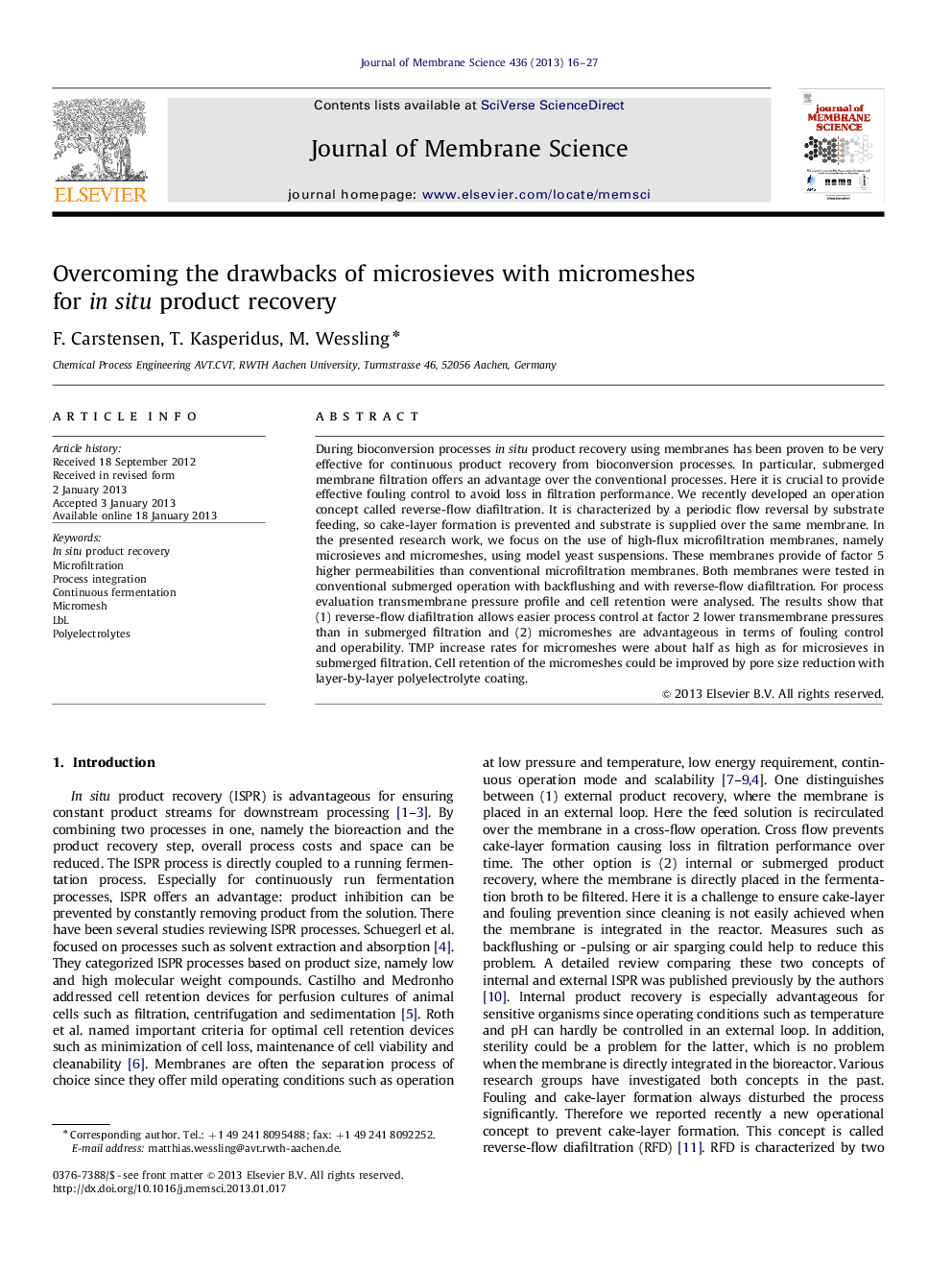| Article ID | Journal | Published Year | Pages | File Type |
|---|---|---|---|---|
| 634327 | Journal of Membrane Science | 2013 | 12 Pages |
During bioconversion processes in situ product recovery using membranes has been proven to be very effective for continuous product recovery from bioconversion processes. In particular, submerged membrane filtration offers an advantage over the conventional processes. Here it is crucial to provide effective fouling control to avoid loss in filtration performance. We recently developed an operation concept called reverse-flow diafiltration. It is characterized by a periodic flow reversal by substrate feeding, so cake-layer formation is prevented and substrate is supplied over the same membrane. In the presented research work, we focus on the use of high-flux microfiltration membranes, namely microsieves and micromeshes, using model yeast suspensions. These membranes provide of factor 5 higher permeabilities than conventional microfiltration membranes. Both membranes were tested in conventional submerged operation with backflushing and with reverse-flow diafiltration. For process evaluation transmembrane pressure profile and cell retention were analysed. The results show that (1) reverse-flow diafiltration allows easier process control at factor 2 lower transmembrane pressures than in submerged filtration and (2) micromeshes are advantageous in terms of fouling control and operability. TMP increase rates for micromeshes were about half as high as for microsieves in submerged filtration. Cell retention of the micromeshes could be improved by pore size reduction with layer-by-layer polyelectrolyte coating.
► Evaluation of two membranes and two process modes for continuous product recovery. ► Micromeshes advantageous in terms of pressure profile and flux stability. ► High filtration stability with no cake-layer formation by reverse-flow diafiltration.
